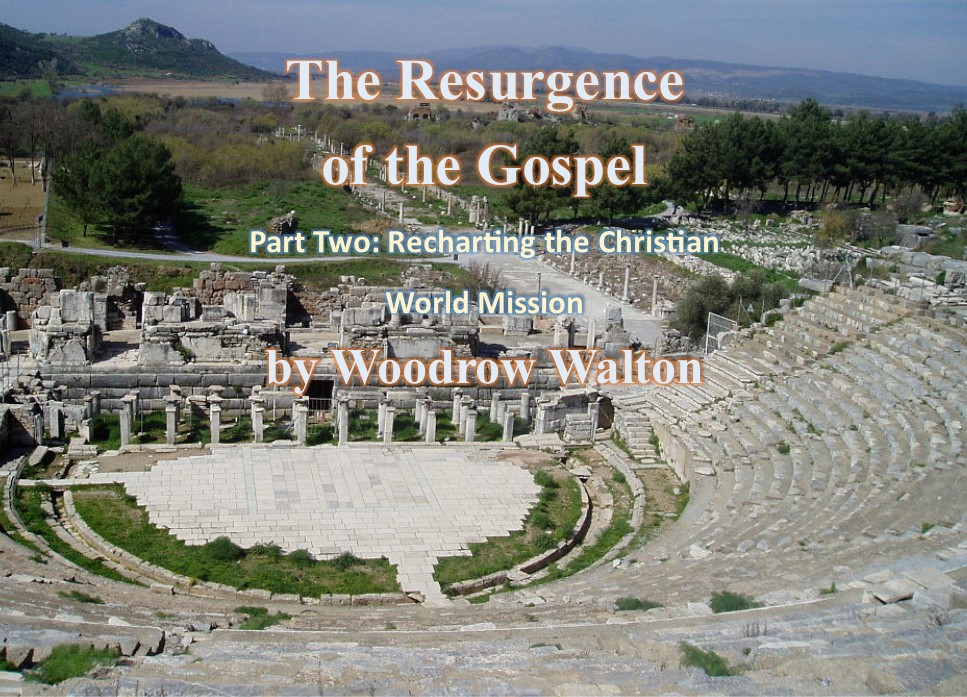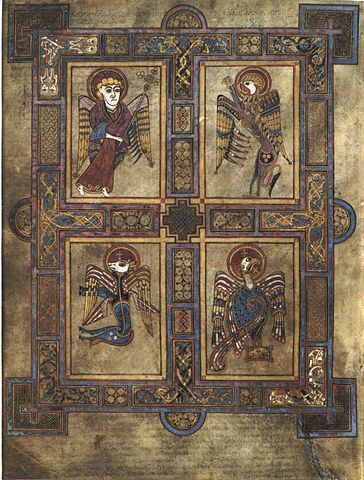The Resurgence of the Gospel, Part Two: Recharting the Christian World Mission

The Resurgence of the Gospel and the Flowering of the Global Christian Message
Part Two: Recharting the Christian World Mission
Church councils, a changing geo-political landscape, invasion and upheavals had a radical impact on how followers of Jesus participated in the Christian mission.

This article is part of The Gospel in History series by Woodrow Walton.
Image: The Books of Kells by way of Wikimedia Commons.
It may seem strange but it is from Ephesus that the re-charting of the Christian world mission takes place. It is, however, not as strange when one considers the fact that Ephesus, situated in Asia province of the Graeco-Roman world and facing the Aegean Sea and looking westward is the western entrepot of a vast East-to-West commerce where goods from oriental sources were readied for trans-shipment either into Europe or into Africa. There had a been long history of commercial intercourse between East and West.
The other factor is that Ephesus, like Antioch-on-the Orontes, is an important Christian Center where Paul the Apostle once preached. Ephesus lies south of Nicaea and of Troas, also crossroads, between East and West. From Troas, Paul and Silas took voyage toward Philippi and Thessalonica. On the other side of the Aegean from Ephesus stood Athens and Corinth.
As a result, Ephesus became an eminent Christian Center and by the late 300’s and early 400’s, and became the host for conciliar meetings of Christian leaders from places in Europe, North Africa, and the Near East. In A.D. 431, a council was held in Ephesus to clarify, for the sake of evangelism and Christian instruction, the meaning of the Trinity particularly with attention on the Person of Christ Jesus. There were three eminent Christians who differed over what to stress. One was Cyril of Alexandria who was strong on the redeeming work of Jesus and on the divinity of Jesus. The second was Theodore of Mopsuestia who was as strong on the humanity of Jesus as Cyril on the divinity of Jesus as Son of God. The third part was Nestorius from Antioch who was made Patriarch in Constantinople. Nestorius differed on referring to Mary, the mother of Jesus, as a theotokos, mother of God.

The amphitheater of Ephesus.
Image: Jordan Klein / Wikimedia Commons
The Council of Ephesus in A.D. 431 came out in Cyril’s favor putting both Theodore and Nestorius in an unfavorable light. A second Council was held in A.D. 449 which amended the verdict but did not exonerate either Theodore or Nestorius. The controversy simmered for twelve long years. Then in A.D. 461, a greater number of Christian leaders gathered from all over the then Christian world, from York in Roman Britain, to John, a Bishop in western Persia. The Council at Chalcedon came down hard on the Second Council of Ephesus and called it a “Robber” Council. It was a partial victory for both Nestorius and Cyril and for the Apostle Paul’s statement found in his second letter to the Corinthians: “God was in Christ” reconciling the world to himself (II Corinthians 5:18-19ff). Though neither Cyril nor Nestorius was fully satisfied, it did free both of them to go back to Egypt and to Antioch to do that which was most important, to preach the gospel as each understood the gospel. In the years between A.D. 431 and A.D. 461, Nestorius wrote a defense, first done in Greek, then translated into Syriac between A.D. 525 and 533. The Bazaar of Heracleides must have been written between A.D. 451 or 452, as he mentions the death of Emperor Theodosius in A.D. 450.
Category: Church History, Fall 2018


